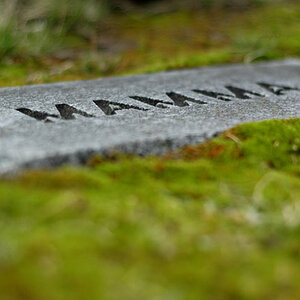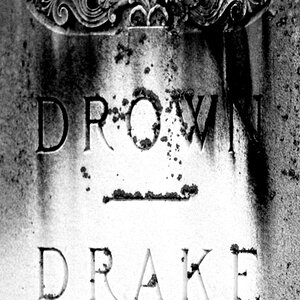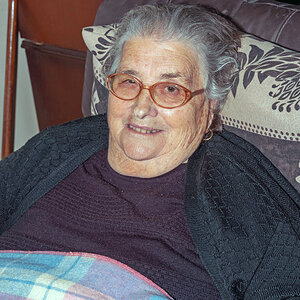Ysarex
Been spending a lot of time on here!
- Joined
- Nov 27, 2011
- Messages
- 7,139
- Reaction score
- 3,700
- Location
- St. Louis
- Can others edit my Photos
- Photos OK to edit
Hmm, I see. Thanks for this comprehensive reply.
One last thing though and then I think I got it:
You say that in the photo with the white geranium the assumption applies that the light meter is taking into account the light reflecting off the geranium's surface--that a mixture of the less reflective objects in the photo (i.e. the green leaves in the shade) with the more reflective geranium, averages out the overall reflectance to about 18%. (I suppose given that the camera is in an evaluative metering mode).
Yes. The brighter areas averaged with the darker areas should bring us to an overall average near 18% reflectance. This we've substantiated empirically over time. Long before you were born photographers and camera engineers took a bazillion different meter readings of THE WORLD as we see and and low and behold when they averaged them all together out came 18% reflectance. So each time we go to take a photo we assume that average because our machine has been adjusted to that average. In that flower photo the camera meter is set to weighted average. It's averaging the whole frame but placing extra weight on the center say 60%.
Machines can't evaluate squat. One of my camera's full auto settings is labeled "SMART" -- damn thing is dumb as a 2x4. You can't buy anything today that the marketing people haven't polluted in one way or another. If you let them influence you you'll get confused. A machine can be programed with pretty sophisticated software algorithms that make it appear as if the machine were, in the words of Arthur Clarke, magic. One unexpected variable and they fall face down. You're smart. You can evaluate.
Now, say we fill the entire frame with white geraniums, to the point that we no longer see shade. Averaged out, let's say that boosts the photo's overall reflectance to 50%. Does that mean we must stop down to compensate for the added light? The incident light hasn't changed, but more light has been introduced with more reflective white geraniums. And if this is true, doesn't that mean when one shoots a snowy landscape on a clear day, that the overall reflectance is also higher (making the difference between EV15 and EV16)?
No. Backwards. You're using the camera meter to determine the exposure. When the meter sees a subject that is brighter than the expected average it responds by reducing exposure but you in fact want to photograph that brighter object as it really is.
Let's start over with the flower photo and assume an average 18% reflectance was correct for the scene. The scene is sunlit and so let's assume the camera at ISO 100 came up with an exposure of 1/500 sec. f/8. Now add in the extra flowers without changing the light and the scene reflectance goes up. The camera meter will respond to the increase in light only. It's doesn't know you've altered the overall scene reflectance average -- it just measures brighter light and it changes the exposure to 1/500 sec. f/11. That's going to make the white flowers get dingy and darken. You compensate by forcing the change from 1/500 sec. f/11 back to 1/500 sec. f/8.
Joe


![[No title]](/data/xfmg/thumbnail/33/33031-909b1e1ff8739eef165c60b70c9a6a38.jpg?1619735845)

![[No title]](/data/xfmg/thumbnail/40/40307-b3813381d3c1ef8282c72905405b50fe.jpg?1619739413)
![[No title]](/data/xfmg/thumbnail/33/33030-2d80455c47ebf5f145e0bd5064267aea.jpg?1619735844)

![[No title]](/data/xfmg/thumbnail/35/35263-86f580cf5d28d23109a45984030a79ad.jpg?1619736968)


![[No title]](/data/xfmg/thumbnail/40/40311-715dda8167abb793178d6abf7e8136fe.jpg?1619739414)
![[No title]](/data/xfmg/thumbnail/40/40310-01bec1b9b7918522bf21a09cf75c5266.jpg?1619739414)

